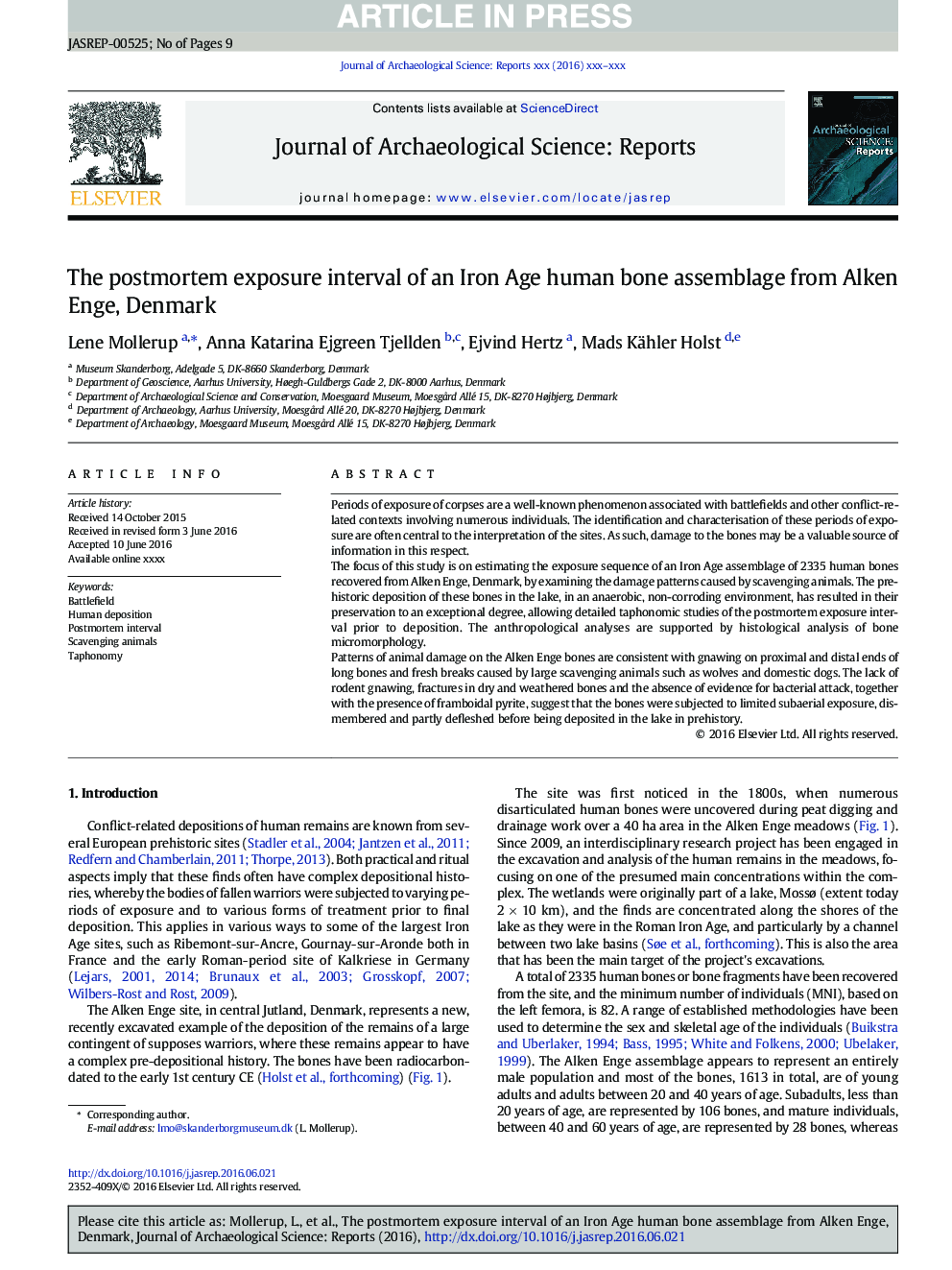| Article ID | Journal | Published Year | Pages | File Type |
|---|---|---|---|---|
| 5112207 | Journal of Archaeological Science: Reports | 2016 | 9 Pages |
Abstract
Patterns of animal damage on the Alken Enge bones are consistent with gnawing on proximal and distal ends of long bones and fresh breaks caused by large scavenging animals such as wolves and domestic dogs. The lack of rodent gnawing, fractures in dry and weathered bones and the absence of evidence for bacterial attack, together with the presence of framboidal pyrite, suggest that the bones were subjected to limited subaerial exposure, dismembered and partly defleshed before being deposited in the lake in prehistory.
Related Topics
Social Sciences and Humanities
Arts and Humanities
History
Authors
Lene Mollerup, Anna Katarina Ejgreen Tjellden, Ejvind Hertz, Mads Kähler Holst,
